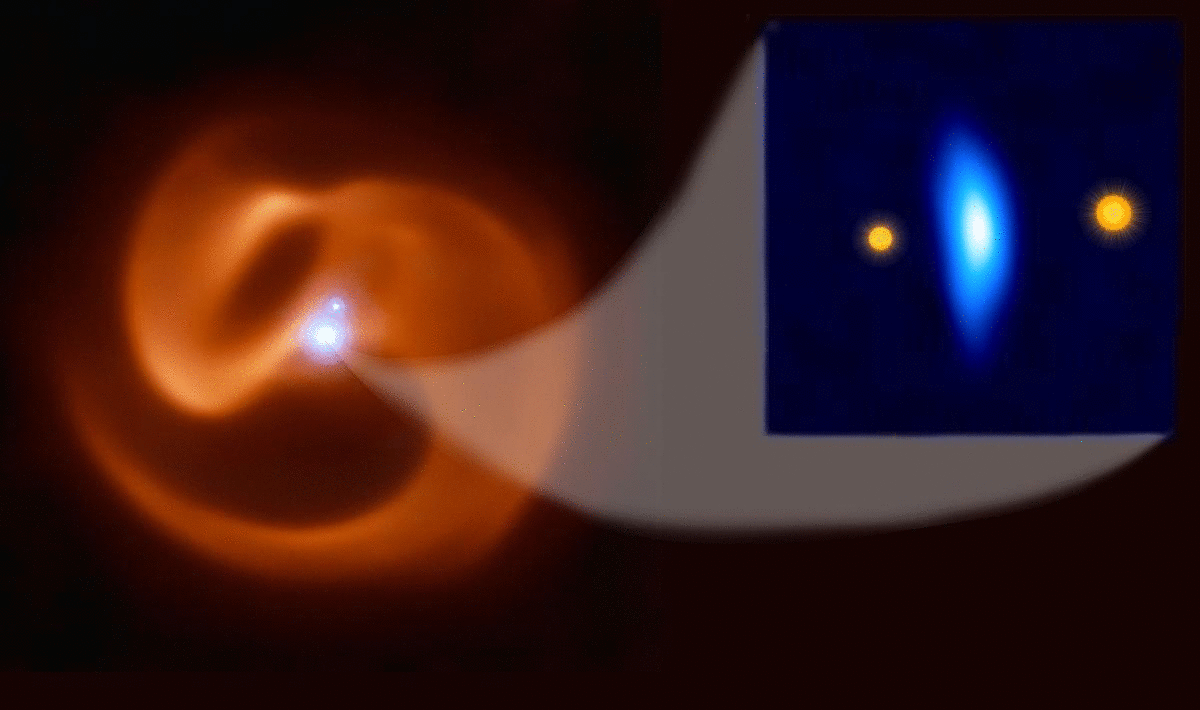Daily Image
15-02-2021Resolving the extreme collision of stellar winds at the heart of Apep
| Submitter: | Benito Marcote |
| Description: | Apep was recently discovered (Callingham et al. 2019) as a potential colliding wind binary emitting luminously from radio to X-rays, with the emission driven by a binary composed of two Wolf-Rayet (WR) stars of one carbon-sequence (WC8) and one nitrogen-sequence (WN4-6b). The beauty of Apep lies on the giant spiral dust plume that is seen by mid-infrared imaging, that is reminiscent of a pinwheel nebula. At radio wavelengths, Apep was extremely bright, making the system the most luminous non-thermal colliding wind binary discovered to date by over an order of magnitude. To understand the origin of this unusual radio emission, we conducted radio observations with the Australian Long Baseline Array (LBA) which allowed us to resolve the emitting region. A bow-shaped radio-emitting structure was clearly seen, as expected from emission arising from the collision of the two stellar winds. It's orientation and shape was consistent with the expected separation and position angle of the two stars, and now we managed to obtain an absolute position for both of them, and an estimation of the wind momentum rate ratio. Furthermore, the wind collision is now confirmed to be the basis for the spiral dust plume. Apep is the first confirmed colliding wind binary comprising two Wolf-Rayet stars. The more extreme winds of WR stars with respect to other systems hosting O/B stars, in combination of quite favorable orbital parameters, must be the responsible ones of providing a significantly higher energetic environment that bolsters the radio emission. See the news article at the JIVE website or the original paper (Marcote et al. 2021) published in MNRAS. |
| Copyright: | K. Immer & B. Marcote, ESO/Callingham et al. |
| Tweet |  |
